It seems that I have spent a lot of time strolling down memory lane lately. This dress is yet another project from the past, 28 years past to be exact. What memories it evokes, what an interesting history it has! This dress has been around the world.
I first saw a version of this pretty thing at the very first SAGA Regional Seminar in Spartanburg, SC, in 1982 (I think). My mother, my dear friend Mary Hale Hoffmann (a PlayGroup Mama) and I attended this life-altering event.It was also the first time that either Mary or I had left our children at home while we “gallivanted” and the first time that we experienced the world of smocking and heirloom sewing outside our circle of three. Lots of firsts on this trip!
But first let me give you the details of the dress itself for those of you who have no interest in ancient history.
The pattern is Rebecca’s Bow Dress, which I did for Martha Pullen.
Entredeux outlines the neckline and armscyes. Blocks of lace insertion and entredeux alternate with Swiss embroidered bows on the yoke fancyband.
This blue frock is the third such dress I made. On the first and second dresses, the bows were pink shadow work. My scanner died today or I would have shown a close up of the bows so you could see just how lovely they are.
The butterfly sleeves are a sweet, special detail on an heirloom dress. Rebecca loved them. The entredeux beading, however, is a practical detail. Having made only one heirloom dress prior to this, I had already learned that lace beading would not hold up well when worn by my active child. Since then, except for most baby dresses, entredeux beading is what I use for sleeves.
When sewing Rebecca’s Bow Dress, I discovered the technique used to create the cascading lace sleeve ruffle for the first time. Surely, others had happened upon this little trick before this dress was made, but it was new to me.
The skirt’s fancyband repeats the pattern of the yoke, but is bordered by rows of insertion and entredeux.
As I look at this dress now, I can’t help but think about how it could be improved by using pinstitch instead of commercial entredeux in so many places. It would have been much faster, less expensive and much lighter. Ahh, but that was then and this is now. Technology marches on and it serves no good purpose to look back with regret.
Enough about the dress details. Here is its story and history.
In 1982, SAGA, the Smocking Arts Guild of America, was in its infancy, less than 5 years old. Leaders of that group and other like minded women converged on Spartanburg, South Carolina with the fervor of pilgrims who had finally reached The Holy Land. We were both awed and giddy with the acquaintance and influence of one another.
In our wildest dreams before the trip, the classes were not as exciting. We met Martha Pullen, Elizabeth Travis Johnson, Margaret Pierce, Mildred Turner, Connie Harbor and many, many others. All three of us took Martha’s heirloom sewing, Mrs. Johnson’s construction class and Margaret’s shadow work class, after which Mary went on to write the first contemporary book on the topic, published by Martha Pullen.
About a year prior to this workshop, Becky Summers had written the first book on heirloom sewing and was to teach a class on that topic. Just prior to the seminar, Martha Pullen’s first book had been released and that, too, was clutched in our hot hands.We were smitten with heirloom.
As it turned out, Becky had a medical emergency and Martha Pullen substituted for her. Dear Mildred Turner assisted her. What a wild ride that class was!
But I digress. At the market, one vendor’s display included a white bow dress much like this, but all white and wonderful and wispy. I went back again and again to gaze upon its beauty and asked about the pattern. “There is none,” was the reply.”It’s just a basic yoke.”
At that time, I had taken one class in heirloom and had actually been sewing, casually, for a total of 2 years.Just a basic yoke? But I WANTED that dress for my Rebecca, who was 4 years old at the time.
So I sketched the dress and tried to figure yardage requirements. From this vendor, I purchased pink shadow work bows and all the goods needed, vowing to make the dress when I got home.
Meanwhile, Martha Pullen’s influence extended beyond the classroom. While the dining room had a table reserved for the teachers, Martha opted instead to sit with the students. That is no surprise now, but at the time it was rather surprising. So for the duration of the workshop, my little group had lunch and dinner with Martha, who was just a regular gal, new to the business of teaching sewing. Her 7 year old daughter Joanna was with her and we all enjoyed that spunky child. Martha was a warm, funny, friendly lady but not a diva. We just liked her.
At lunch, I prattled on with Martha and the others at our table of 8 about the white Nelona bow dress and how I was going to start on it as soon as I returned home.
A short time later, Martha asked me to teach at a workshop she was giving at her shop–Martha’s first School of Art Fashion. It was to be for other shop owners and she wanted me to teach a flat lace portrait collar.
“But, Martha, I have never made one! I don’t know how!” I confessed.
“Well, for goodness sake,” she said, “the workshop isn’t for 4 months. Learn how!” So I did. She also asked Mary to teach shadow work. But Mary already knew how to do that, so I thought she had it easy.
What about the dress? Well, I did make it, on my wonderful 1968 Kenmore WITH zig zag and buttonholes, thank you very much. I took it to use in class as I demonstrated my techniques for making a flat lace collar when I taught at Martha’s first school in the little blue house on Madison Street. Martha loved the bow dress and, because there was no pattern, asked me to do one. She also asked me to make another bow dress for Joanna. And so I did.
Some time later, Lynn, a very wealthy friend of mine (I mean “wealthy” as in she had a limo and a chauffeur.) asked me to make a blue bow dress for her daughter Carol. I didn’t want to make a third dress. So in an effort to discourage her, I quoted an exorbitant price. Undaunted, she commissioned the dress, wanting it for her darling daughter, (a good friend of my daughter Rebecca but a year older) as much as I had wanted it for mine.
Lynn, the children and her husband, a physician with expertise in an innovative surgical procedure, were going to China as guests of the Premier Himself! She wanted this dress for Carol to wear to a state dinner in their honor.
So the dress was made, though with far less joy than I experienced making the first two. But when this adorable 6 year old tried on the dress she looked like an honest-to-goodness cherub from heaven. Her platinum ringlets, huge, round eyes the color of the sky blue batiste, and sweet soul made it all worthwhile.
Fast forward two years……my friend wanted another dress for her daughter, just like another one of Rebecca’s. When I told her it would be very expensive because the goods were very costly, she remarked, “Then smock cheap!”
“I don’t smock cheap.” I replied, somewhat coldly.
She balked at the price until I suggested that she use the blue bow China dress for a down payment. By then, Rebecca had outgrown her white bow dress and I wasn’t about to make a fourth.
So she agreed and the dress was back in my closet. However, it was too short for Rebecca. There was just enough blue batiste left over to insert in the skirt, hiding the seams under two tucks. Of course, I liked the dress much better before the tucks, and would have preferred three tucks. But there was not enough fabric.
So that is the very long story of this second-hand-rose heirloom dress.
Still, for a hand-me-down, it looks pretty good. Rebecca wore it for another two years! With today’s longer skirt lengths, it will be a real challenge to make this long enough for my granddaughter Laurel. But already I’m thinking about it.
Tell us about your special hand-me-downs or special techniques for lengthening skirts. Inquiring minds want to know.

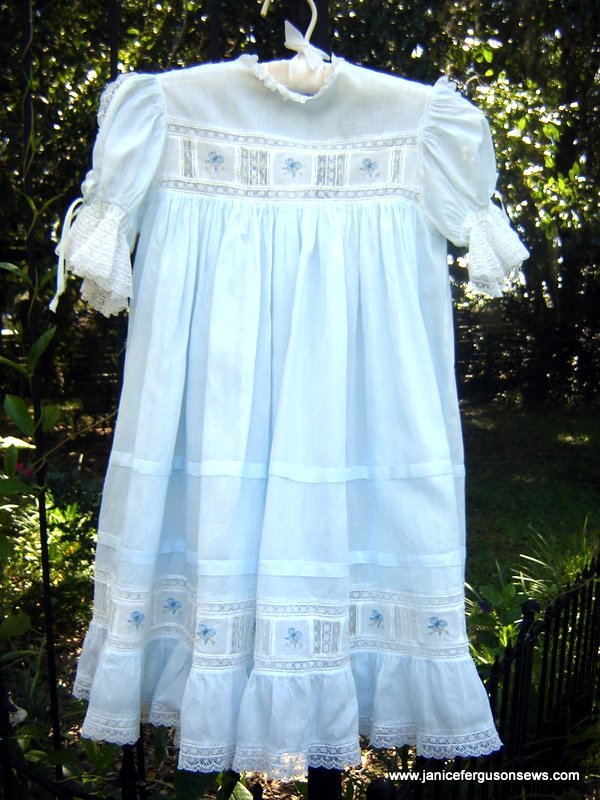
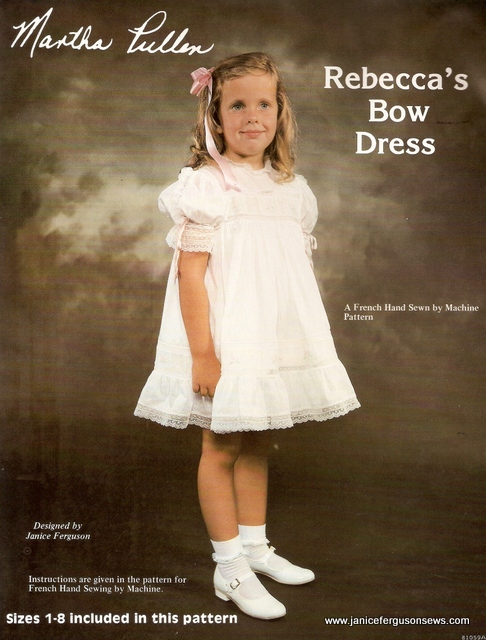
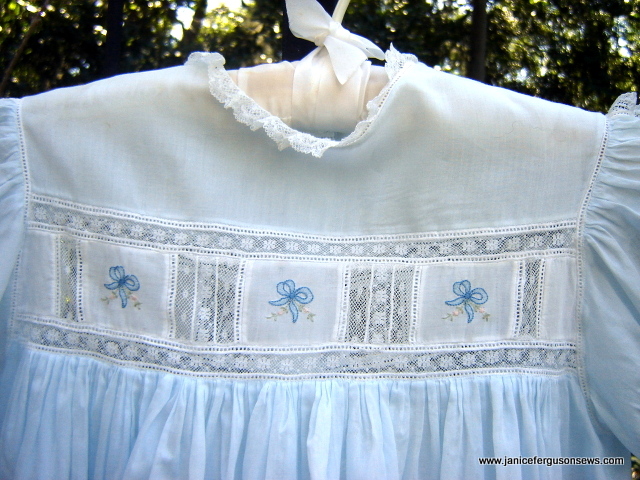
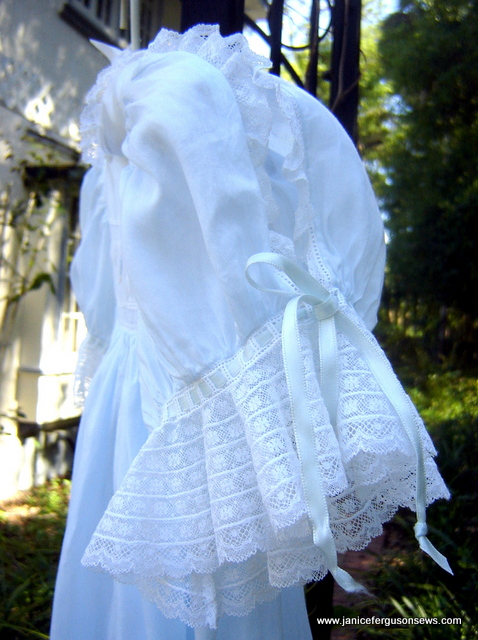
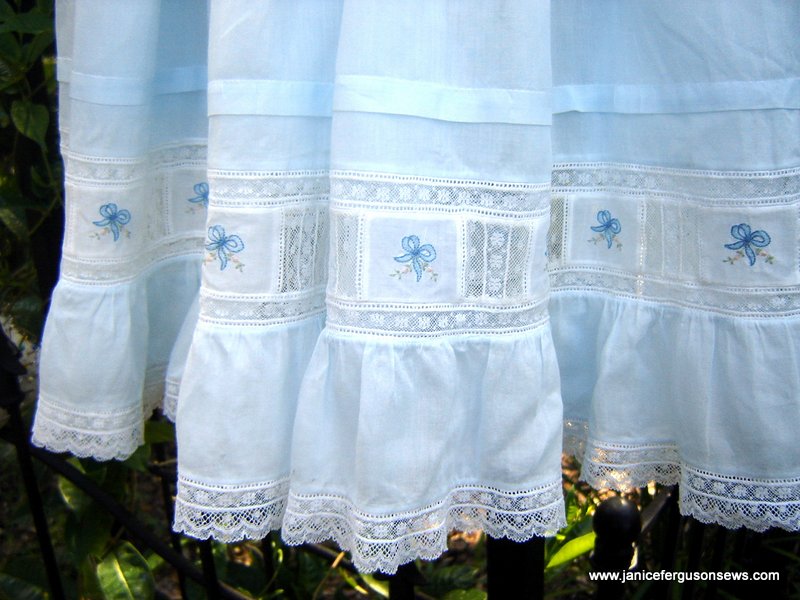
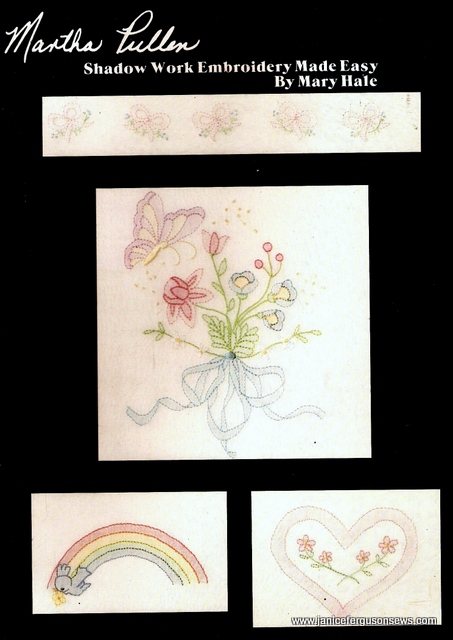

9 responses to “Heirloom Bow Dress Hand-me-Down”